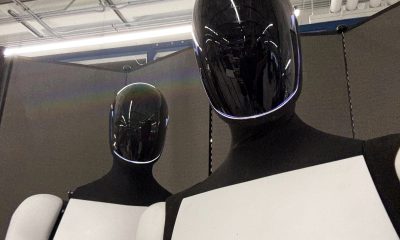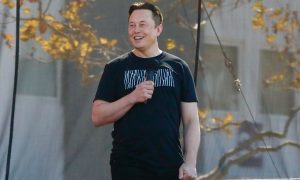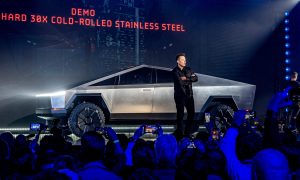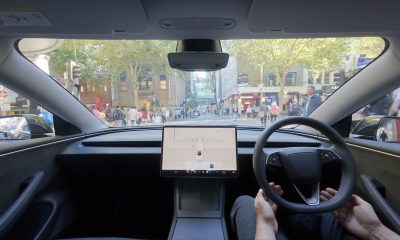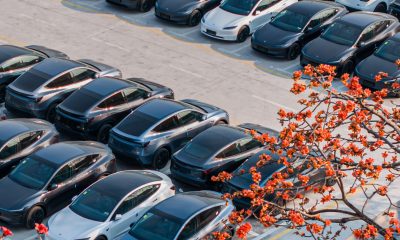Investor's Corner
Tesla Destination Charging to the Rescue in China
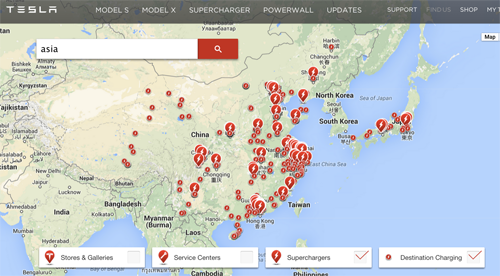
Another big week is on deck for Tesla, the automaker and energy company release its first quarter 2015 earnings this week and that could include updates on China developments. Coming into 2015, the automaker’s woes in China were very apparent, with the firing of Veronica Wu and other PR personnel.
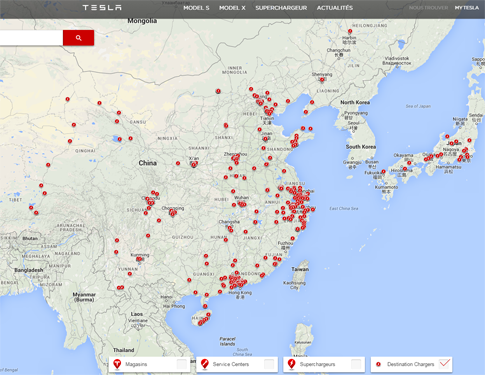
The Tesla map show includes just destination charging in Asia, excluding supercharging infrastructure.
The conventional wisdom for the firings centered around the lack of a singular message about Tesla charging infrastructure in the mainland. In a short matter of time, Tesla is changing that perception as a look at a recent charging map shows an impressive number of destination chargers in Asia, above top. The picture, above, depicts just destination chargers.
Tesla has recently emphasized destination charging for Europe for the 2nd quarter of 2015, but now we know they were quite busy in Asia and China in the 1st quarter. Capital expenditures may be at an all-time high this quarter as the company tries to regain momentum in Asia.
Recently, Tesla has created China momentum:
- Tesla says buyers in China’s Shenzhen can get special licenses: The city offers a limited number of license plates for new energy vehicles and Tesla was included in late March. The southern city borders Hong Kong and releases 20,000 licenses annually.
- In late April, Wuhan Tricycle Automobile Co., Ltd placed an order for 90 Teslas that will give the company a total of 100 Model S electric cars in their fleet. The company has a total of 1,100 cabs on the road in Wuhan, a small China city.
However, the lack of charging narrative is still out there via a “hard-hitting” Forbes post about how ONE customer that sold his Model S due to the lack of charging infrastructure at his complex (home). The guy is a “sorta of a big deal” and his name is Fan Xiabo, an advertising entrepreneur in China.
According to Forbes, the building management at his home said no to a home charger and he eventually sold the Model S for a third of what it’s worth.
I’m thinking he might have looked into that tiny detail before buying a $118,000 car in China. As content marketing entrepreneur, myself, I looked into the charging issue before I made my Model S purchase. Maybe Forbes can do a story on me.
Tesla has many substantial challenges in China. According to the Tesla forum, many upper-end car owners are chauffeured during the week and desire luxury treatment in the back seat. The first edition of Model S cars didn’t have executive rear seats, now that’s been an option since December 2014.
So will Musk and company be able to change the electric car charging narrative for China? See the map below that includes superchargers and destination chargers, you decide?
Investor's Corner
Tesla welcomes Chipotle President Jack Hartung to its Board of Directors
Tesla announced the addition of its new director in a post on social media platform X.
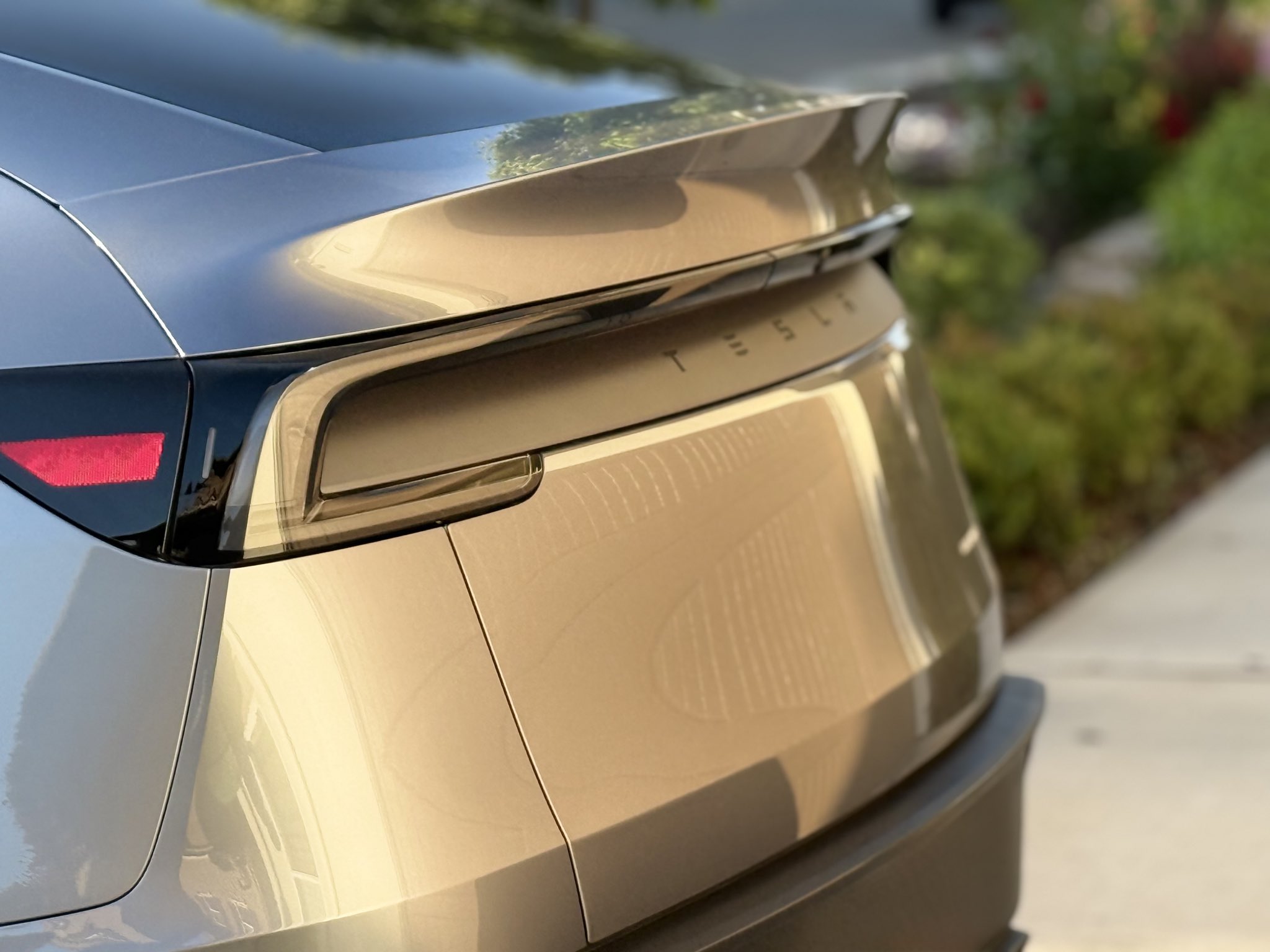
Tesla has welcomed Chipotle president Jack Hartung to its Board of Directors. Hartung will officially start his tenure at the electric vehicle maker on June 1, 2025.
Tesla announced the addition of its new director in a post on social media platform X.
Jack Hartung’s Role
With Hartung’s addition, the Tesla Board will now have nine members. It’s been a while since the company added a new director. Prior to Hartung, the last addition to the Tesla Board was Airbnb co-founder Joe Gebbia back in 2022. As noted in a Reuters report, Hartung will serve on the Tesla Board’s audit committee. He will also retire from his position as president and chief strategy officer at Chipotle, and transition into a senior advisor’s role at the restaurant chain, next month.
Hartung has had a long career in the Mexican grill, joining Chipotle in 2002. He held several positions in the company, most recently serving as Chipotle’s President and Chief Strategy Officer. Tesla highlighted Hartung’s accomplishments in a post on its official account on X.
“Over the past 20+ years under Jack’s financial leadership, Chipotle has seen significant growth with over 3,700 restaurants today across the United States, Canada, the United Kingdom, France, Germany, Kuwait and the United Arab Emirates. Jack was named ‘CFO of the Year’ by Orange County Business Journal and Best CFO in the restaurant category by Institutional Investor,” Tesla wrote in its post on X.
Tesla Board and Musk
Tesla is a controversial company with a controversial CEO, so it is no surprise that the Board of Directors tend to get flak as well. Two weeks ago, for example, Tesla Board Chair Robyn Denholm slammed The Wall Street Journal for publishing an article alleging that company directors had considered a search for a potential successor to Elon Musk. Denholm herself has also been criticized for offloading her TSLA shares.
More recently, news emerged suggesting that the Tesla Board of Directors had formed a special committee aimed at exploring a new pay package for CEO Elon Musk. The committee is reportedly comprised of Tesla board Chair Robyn Denholm and independent director Kathleen Wilson-Thompson, and they would be exploring alternative compensation methods for Musk’s contributions to the company.
Investor's Corner
Rivian stock rises as analysts boost price targets post Q1 earnings
Rivian impressed with smaller-than-expected losses & strong revenue, pushing analysts to raise price targets.
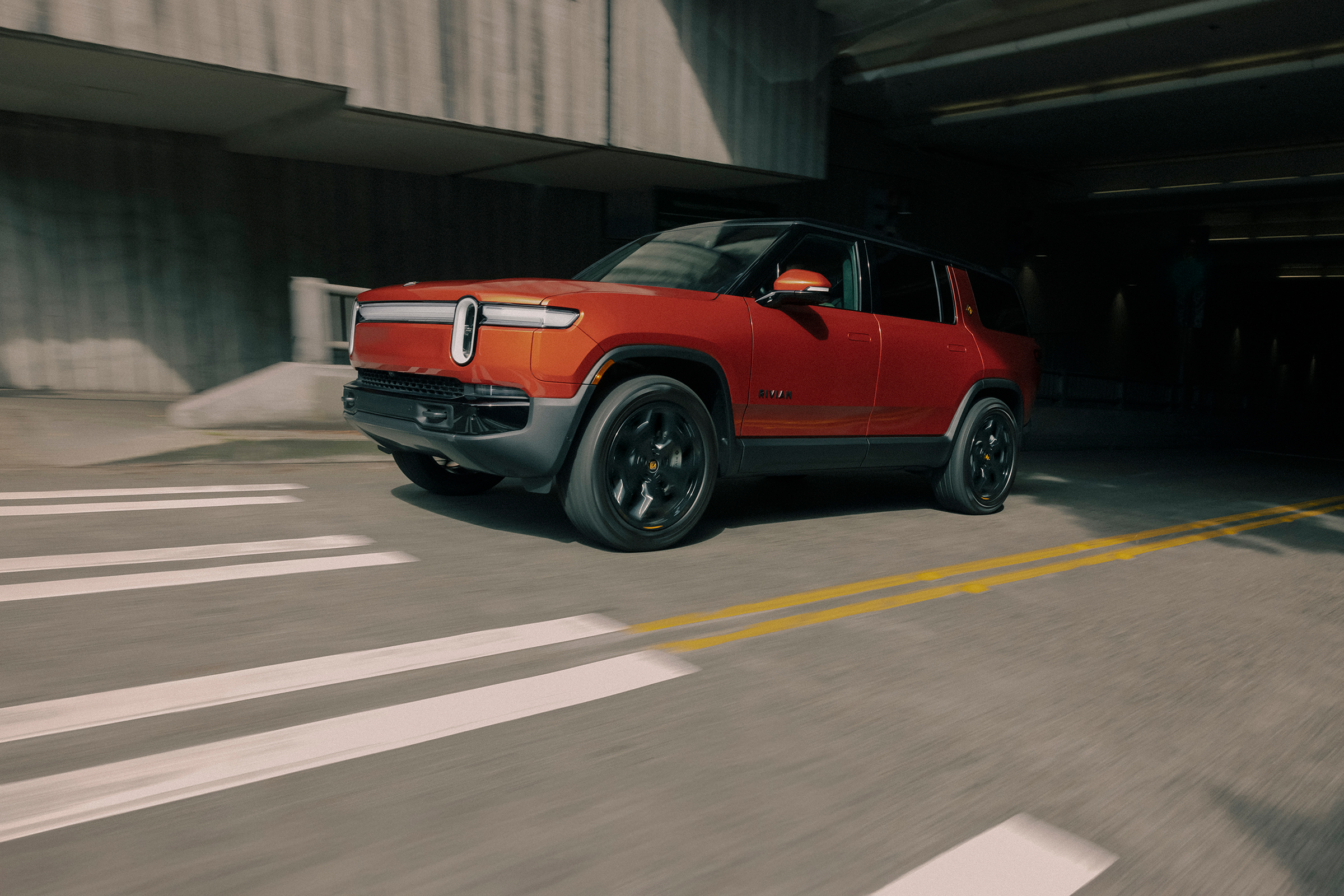
Rivian stock is gaining traction as Wall Street analysts raise price targets following the electric vehicle (EV) maker’s first-quarter earnings report. Despite a dip after the announcement, optimism surrounds Rivian’s cost control and upcoming lower-priced cars.
Last week, Rivian reported a better-than-expected Q1 gross profit, surpassing Wall Street’s forecasts with adjusted losses of $0.48 per share against expectations of $0.92 per share. The company also reported a revenue of $1.24 billion compared to the $1.01 billion anticipated.
However, the EV automaker cut its 2025 delivery forecast and capital spending due to President Donald Trump’s tariffs. It explained that it is “not immune to the impacts of the global trade and economic environment.” RIVN stock dropped nearly 6% post-earnings, closing at $12.72 per share.
Wall Street remains upbeat about Rivian, citing progress toward launching lower-priced vehicles in 2026 and effective cost management. On Monday, Stifel analyst Stephen Gengaro raised his RIVN price target to $18 from $16, maintaining a “Buy” rating. He highlighted Rivian’s “solid progress” toward key milestones.
Conversely, Bernstein’s Daniel Roeska gave RIVN a “Sell” rating. However, Roeska also lifted his Rivian price target to $7.05 from $6.10, acknowledging “better” Q1 results. He warned that profitability remains distant and hinges on multiple product launches by the decade’s end.
Overall, Wall Street’s average price target for RIVN climbed from $14.18 to $14.31, a modest 13-cent increase reflecting positive sentiment. About one-third of analysts covering Rivian rate it a Buy, compared to the S&P 500’s average Buy-rating ratio of 55%.
On Monday, Rivian stock rose 2.7% to $14.64, slightly trailing the S&P 500 and Dow Jones Industrial Average, which gained 3.3% and 2.8%, respectively. The uptick may also stem from broader market gains tied to news of a temporary U.S.-China tariff suspension.
As Rivian navigates trade challenges and scales production at its Illinois factory, its Q1 performance and analyst support signal resilience. With lower-priced EVs on the horizon, Rivian’s strategic moves could bolster its position in the competitive EV market, offering investors cautious optimism for long-term growth.
Investor's Corner
Tesla (TSLA) poised to hit $1 trillion valuation again amid reports of Trump China deal
TSLA stock was up about 8% at $322.56 per share on Monday’s premarket.
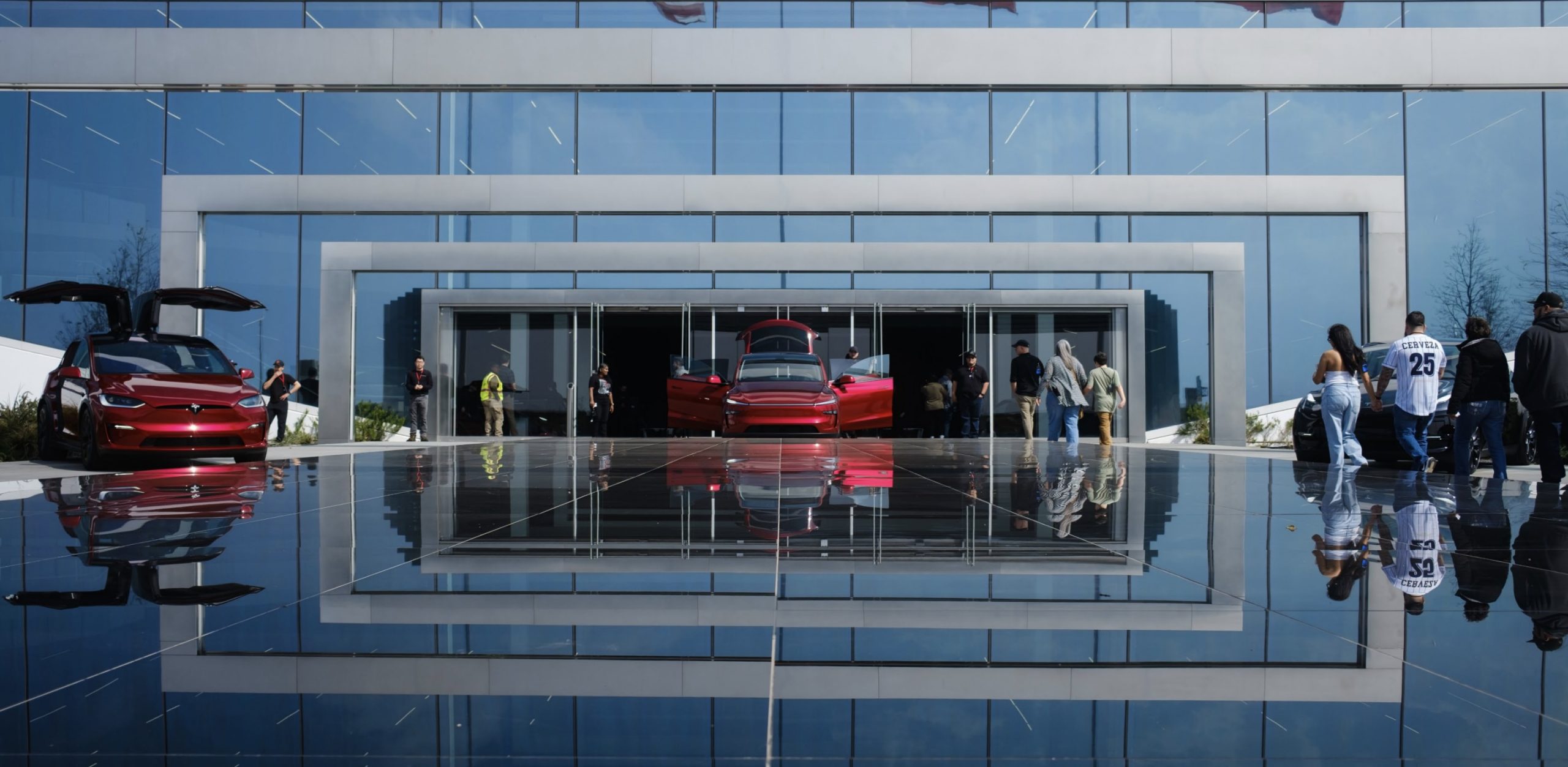
Tesla shares (NASDAQ:TSLA) are on a tear on Monday’s premarket amidst reports that the United States and China have agreed to significantly roll back tariffs on each other’s goods for an initial 90-day period.
As of writing, the premarket price of TSLA shares suggests that the electric vehicle maker might end Monday with a $1 trillion valuation once more.
Tesla and China
TSLA stock was up about 8% at $322.56 per share on Monday’s premarket. As noted in a report from Barron’s, these prices suggest that the company could achieve a trillion-dollar valuation again, a level not seen since late February. Similar to Tesla, the S&P 500 and the Dow Jones Industrial Average were also up 2.8% and 2.1%, respectively, on Monday’s premarket.
The United States and China’s decision to roll back its tariffs would likely be appreciated by CEO Elon Musk. Despite working for the Trump administration’s Department of Government Efficiency (DOGE), and despite Tesla being least affected by the Trump administration’s tariffs due to its strong domestic supply chains in the United States, China, and Europe, Musk has noted that he is a supporter of non-predatory tariffs.
The United States and China’s Agreement
In a joint statement from the United States and China posted on the White House’s official website, the two countries agreed to lower reciprocal tariffs on each other by 115% for 90 days. This means that the United States will temporarily lower its overall tariffs on Chinese goods from 145% to 30%, as noted in an ABC 12 report. China, on the other hand, will also lower its tariffs on American goods from 125% to 10%.
The talks were led by Chinese Vice Premier He Lifeng and Treasury Secretary Scott Bessent and U.S. Trade Representative Jamieson Greer, as per the joint statement. Bessent shared his thoughts about the matter in a comment in Geneva. “The consensus from both delegations is neither side wants to be decoupled, and what have occurred with these very high tariffs … was an equivalent of an embargo, and neither side wants that. We do want trade. We want more balance in trade. And I think both sides are committed to achieving that,” he said.
A spokesperson from China’s Commerce Ministry also shared a statement about the matter. As per the spokesperson, the deal was an “important step by both sides to resolve differences through equal-footing dialogue and consultation, laying the groundwork and creating conditions for further bridging gaps and deepening cooperation.”
-
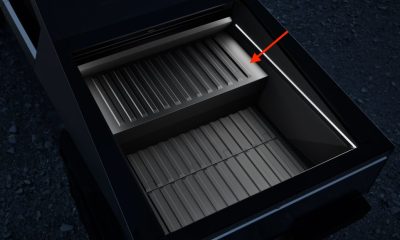
 News2 weeks ago
News2 weeks agoTesla Cybertruck Range Extender gets canceled
-

 Elon Musk6 days ago
Elon Musk6 days agoTesla seems to have fixed one of Full Self-Driving’s most annoying features
-

 Lifestyle2 weeks ago
Lifestyle2 weeks agoAnti-Elon Musk group crushes Tesla Model 3 with Sherman tank–with unexpected results
-

 News2 weeks ago
News2 weeks agoStarlink to launch on United Airlines planes by May 15
-

 News2 weeks ago
News2 weeks agoTesla Semi gets new adoptee in latest sighting
-

 News2 weeks ago
News2 weeks agoTesla launches its most inexpensive trim of new Model Y
-
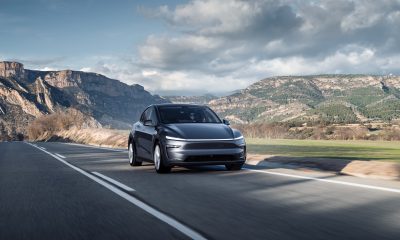
 News2 weeks ago
News2 weeks agoUS’ base Tesla Model Y has an edge vs Shanghai and Berlin’s entry-level Model Ys
-

 News2 weeks ago
News2 weeks agoTesla Cybertruck owners get amazing year-long freebie


